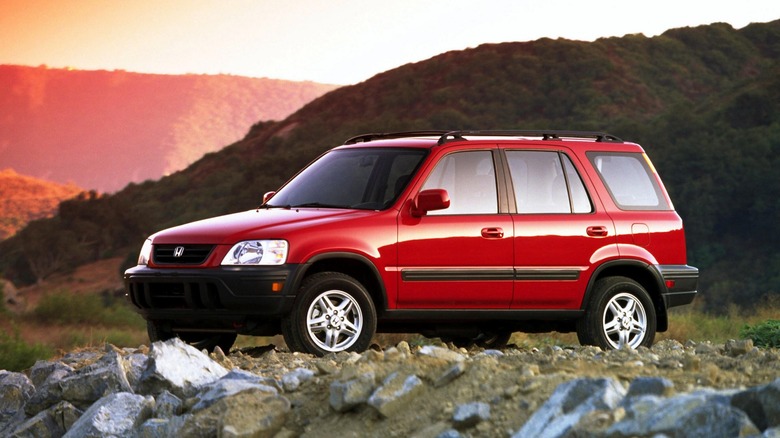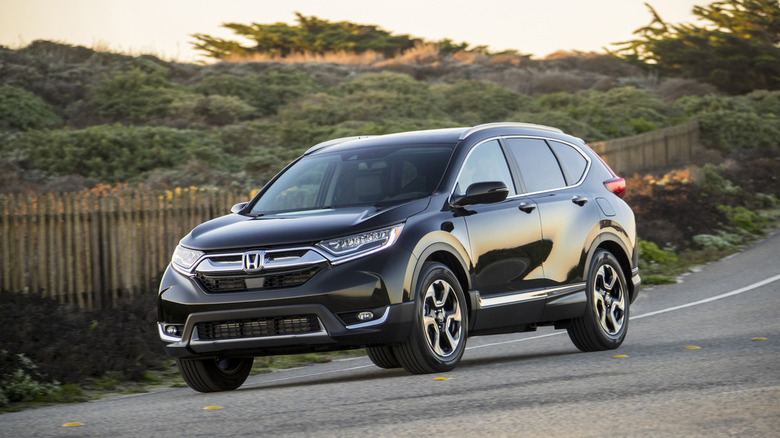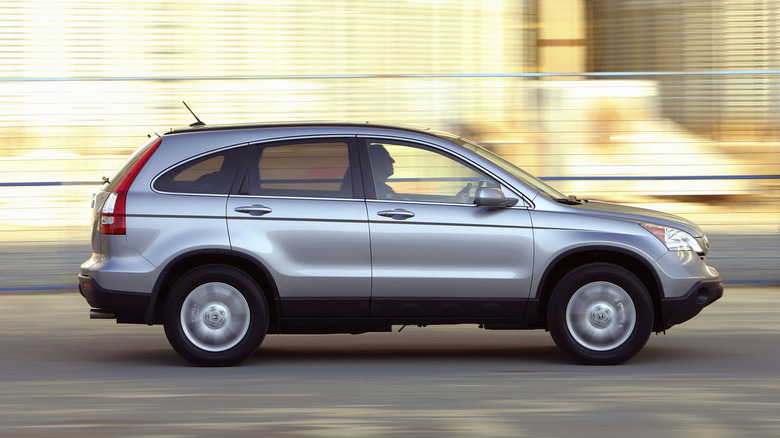Honda CR-V: The Best Years To Buy (And The Ones You Should Steer Clear Of)
The Honda CR-V is one of the most popular compact SUVs in America. It has ranked among America's best-selling vehicles since it first went on sale in 1997 and has topped Honda's sales since 2017. The CR-V (also known as Comfortable Roundabout Vehicle) has lots of exciting features, is small enough to navigate tight city spaces, and large enough to accommodate families.
The CR-V is a great all-rounder meant to cover a large number of needs. It has good fuel economy ratings, available all-wheel drive for inclement weather, and is one of Honda's most reliable vehicles. Some model years even had a rear trunk floor that doubled as a picnic table – how cool is that? But it's not all sunshine and rainbows.
The CR-V has been in production for over 30 years, and there are six generations of Honda's compact SUV. Over that time, the National Highway Traffic Safety Administration (NHTSA) has received several customer complaints about the CR-V, and issued a number of recalls. So, we're taking a closer look at the Honda CR-V to see which years are the most desirable and which ones you should avoid.
A quick note before we dive in: customer complaints and recalls aren't the only factors you should be using when picking a vehicle (especially a used one). Be sure to look at a vehicle's specific maintenance history and have it inspected by an independent mechanic if you want the best chance of purchasing something reliable.
What CR-V model years should you avoid?
These are some of the model years that have received the most complaints from owners and the most recalls. Some CR-Vs are part of a large recall involving Takata airbags – specifically the model years 2002 through 2011. When purchasing a used CR-V affected by those recalls, you should ensure the proper recall repairs have been completed.
- 1997/1998: Many owners of early first-generation CR-Vs have complained about electrical issues. These complaints generally center around vehicle shutdowns, sometimes while in motion. Two recalls were issued: one for an ignition switch and one for the routing of a wiring harness.
- 2002: The first year of the second-gen CR-V had several problems. The 2002 CR-V has 16 recalls, most related to the Takata airbag issue. Two other recalls are for the driver-side power window switch, which can overheat and fail, increasing the risk of a fire.
- 2007/2008: In addition to the Takata airbag recalls, 2007 and 2008 CR-Vs have recalls related to the failure of a rear trailing arm. There are also several owner complaints related to failing door locks.
- 2017/2018: According to NHTSA, there are over 2,700 complaints from the owners of CR-Vs during these two model years. Several complaints are related to the fuel system – specifically failing fuel injectors that can lead to an inoperable vehicle. Owners have also complained about the collision mitigation system applying the brakes when no vehicle or object was in front of them.
What CR-V model years should you buy?
There are several years worth considering when looking for a used CR-V. These model years have received relatively low numbers of complaints and recalls, so we expect them to be a bit more reliable:
- 1999–2001: If you're looking for a first-gen CR-V, these are the years to look for. In 1999, the CR-V got a power bump from 126 horsepower to 146 hp. In 2001, CR-Vs were available with front heated seats. Models from 1999 to 2001 had a similar number of customer complaints as the 1997 and 1998 models, but Honda was making significantly more CR-Vs during those years, so the ratio of complaints to vehicles sold improved.
- 2009-2010: While they are still part of the Takata airbag recall era of CR-Vs, 2009 and 2010 models have fewer owner complaints than 2007–2008 models. In 2010, the CR-V got some exterior styling updates and increased power. However, several 2010 models have received complaints due to oil consumption, so you might want to stick with the previous model year.
- 2019: There was a significant drop in complaints between the 2018 and 2019 model years. This drop could be due to the vehicles being newer and having lower mileage, but it's still encouraging. There are a few recalls worth noting for 2019 models, including a fuel pump issue and a rear subframe separation. Be sure that the vehicle you're interested in has had those issues addressed, if necessary.


